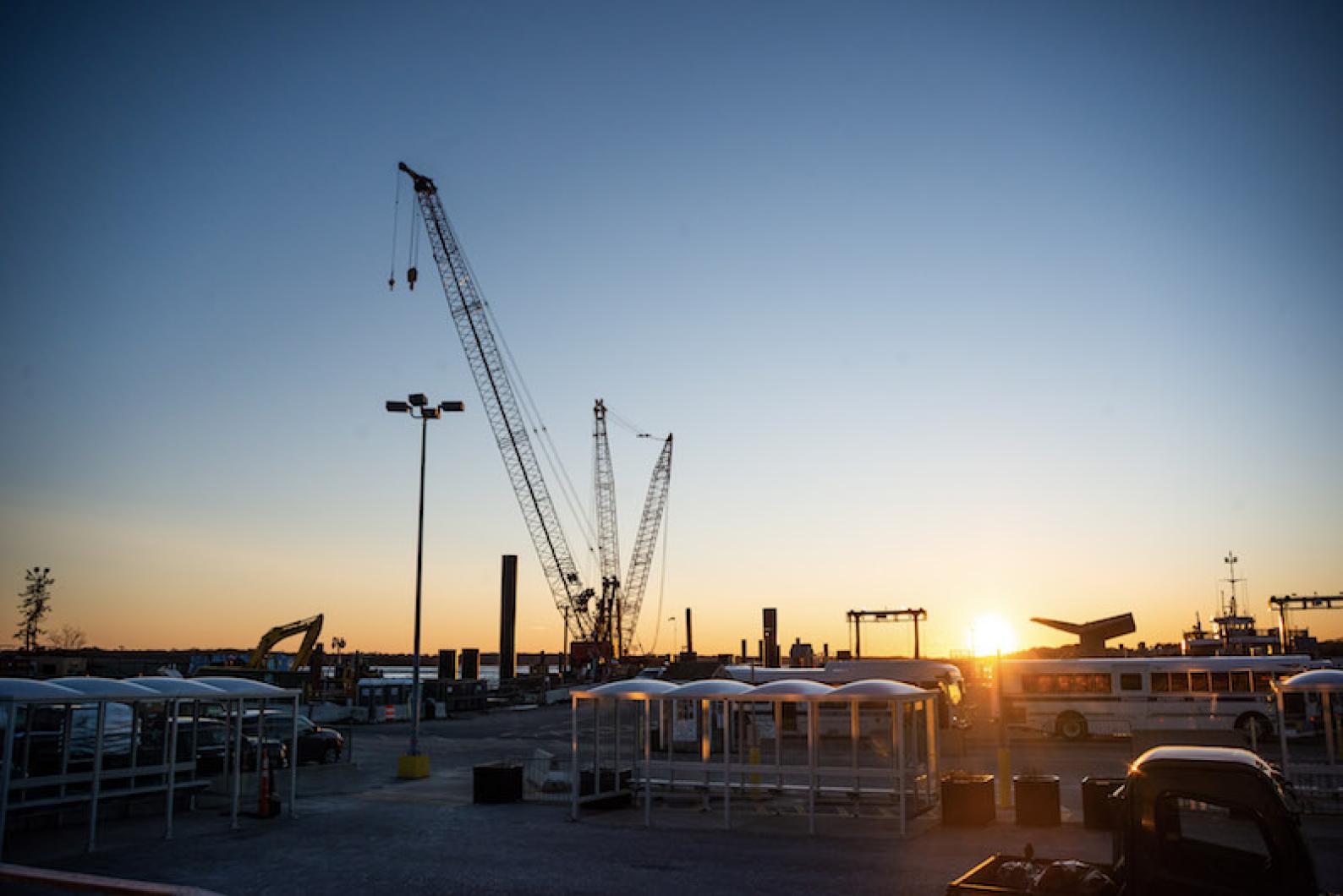Steamship Authority governors voted Wednesday to approve a change order for the $60 million marine side Woods Hole Terminal renovation project, but not before delivering sharp criticisms about the project’s mounting costs.
The latest change order is to purchase new materials for a gravity-based dolphin structure on one of its slips, costing $173,000. Dolphins are manmade marine structures that extend above the water level but are not connected to shore.
The massive six-year project to upgrade the Woods Hole terminal’s waterside facilities and marine infrastructure has piled up significant expenses since breaking ground in 2018. Initially estimated at $53 million, change orders have pushed up the project cost by $7.6 million, with additional expenses on the horizon before the project’s first phase wraps up, SSA general manager Bob Davis said.
The new costs come as the boat line begins airing preliminary design plans for the project’s land side renovations, which include a new ticket office and redesigned parking lot. Costs for that part of the project are not yet known.
The SSA is funding the Woods Hole project through bonds. The general contractor for the marine side of the project is the Quincy-based construction company Jay Cashman, Inc.
During an hour-long discussion at a special meeting Wednesday, SSA governors bristled at the recent change order, voicing their dismay at the unanticipated costs.
“I sort of feel like it’s a little bit of bait and switch,” said New Bedford governor Moira Tierney. “This is a big additional cost to a project that’s has a lot of change orders . . . I think it’s a systemic issue with how we handle our contracting.”
Vineyard governor Jim Malkin and board chairman Kathryn Wilson of Falmouth also called the boat line’s bidding process into question as they struggled to outline the remaining costs needed to complete the project.
“We need to look at our procurement, we need to look at our bidding. If nothing else, to the point that Ms. Tierney made, the board needs to know in advance what the contingencies might be,” said Mr. Malkin.
But SSA management pushed back on the complaint, citing the boat line’s decision to accept a lower bid for the project years ago with the understanding that unbudgeted snags would be addressed on a case-by-case basis.
“We did do a number of tests and testing in that area, so we were aware that there were going to be problems. We were just hopeful that we could get through it,” Mr. Davis said, speaking of the marine side work and pointing to the 10 per cent contingency built into the project’s initial price tag.
He added that in December, the boat line had anticipated accruing anywhere between $100,000 to $1.4 million in outstanding construction costs before the project’s end. The recent change orders have not yet maxed out that estimate.
Dino Fiscaletti, an engineer on the project, spoke from a design perspective, pointing to the challenging nature of underwater engineering and the area’s unpredictable topography as key contributors to rising costs.
“We do what we can to try and predict what we’ll find and to try and predict what the cost might be, but until you actually drive the piles, you don’t know,” said Mr. Fiscaletti. “You’ve got to get to be able to shift on the fly as you know as you go . . . that’s just the nature of pile driving.”
The new designs, which were engineered by firm GZA GeoEnvironmental, rely on gravity and friction to keep the dolphin and slip in place. The plans were drawn after a boulder field was discovered obstructing the area where the firm planned to drill supports 45 feet into the ocean floor.
The design of the new structure is expected to cost an additional $500,000 down the line, Mr. Davis said. Other unrelated expenses, including issues with two of the project’s monopiles, will likely add $395,000 more to the total bill before marine construction is through, he said.
Moving beyond the price tag, SSA governors also raised myriad concerns about the safety of the gravity-based support system, its required maintenance and its lifetime when used in high-impact marine situations.
Mr. Malkin requested information on other marine uses for the gravity dolphin structure and how they’ve held up over time. “To get some real life examination of what’s happened would, if nothing else, just make me more comfortable,” he said.
In the end, despite reluctance, the board voted 5-0 in favor of the change order.






Comments (7)
Comments
Comment policy »